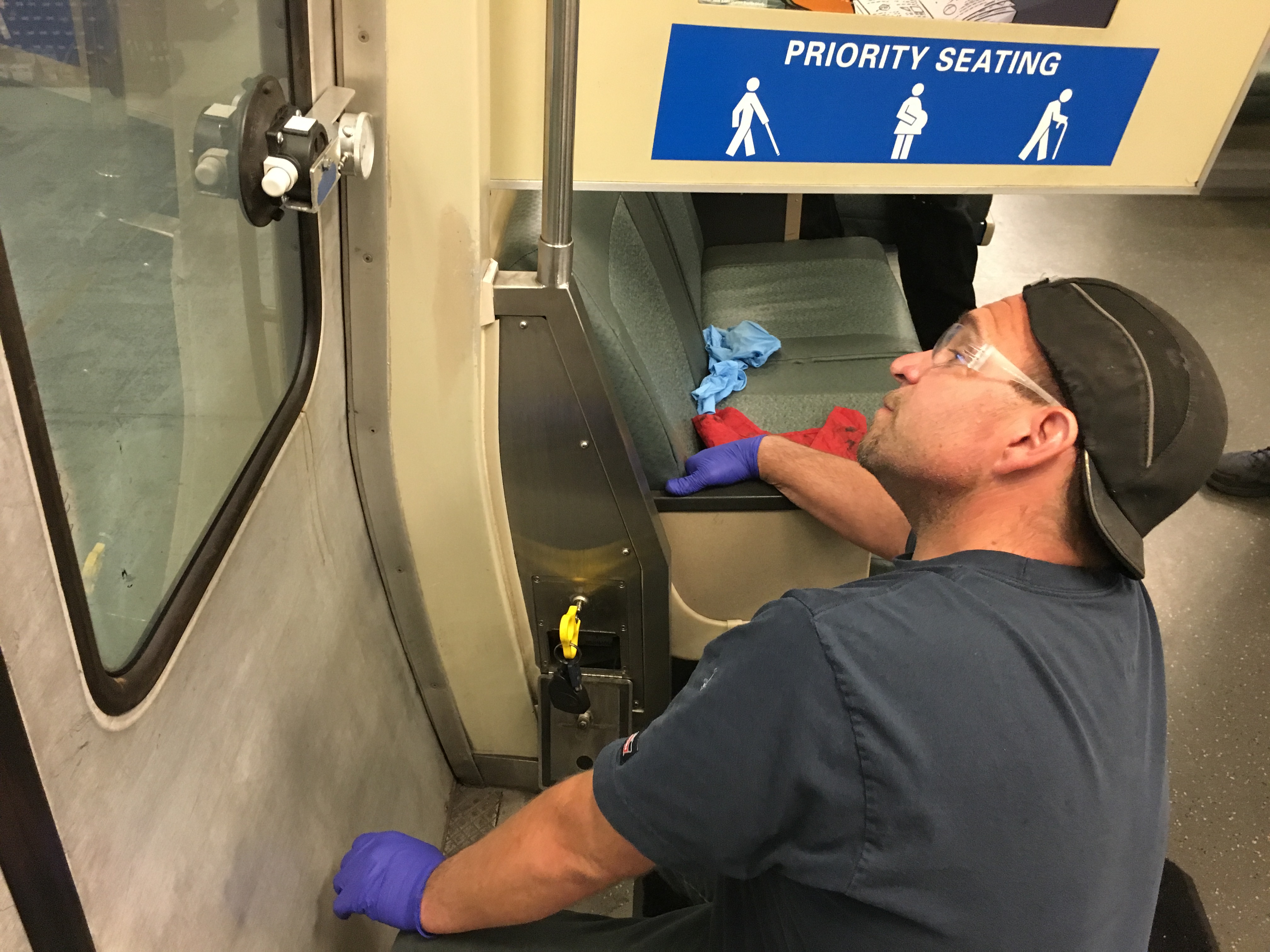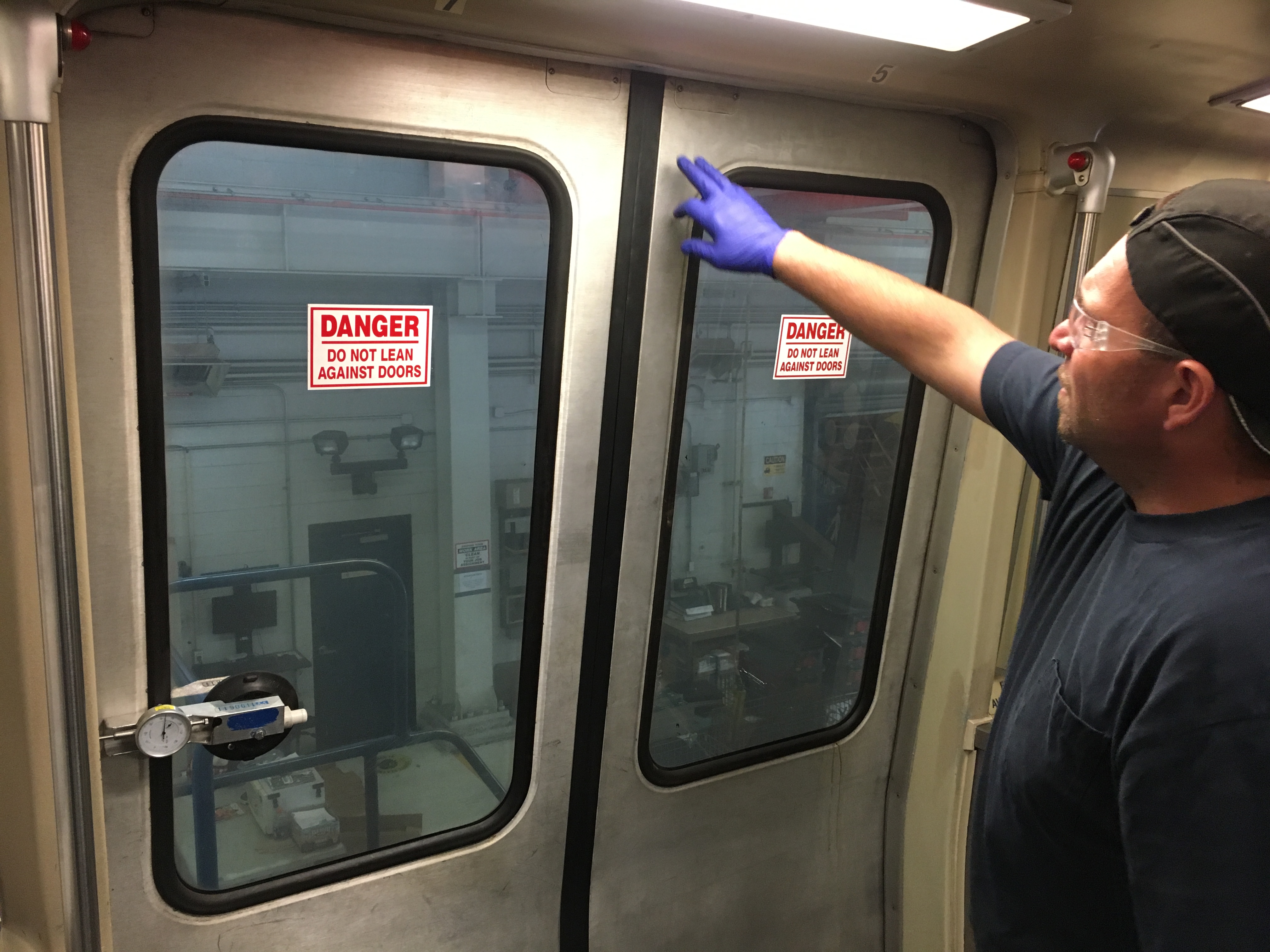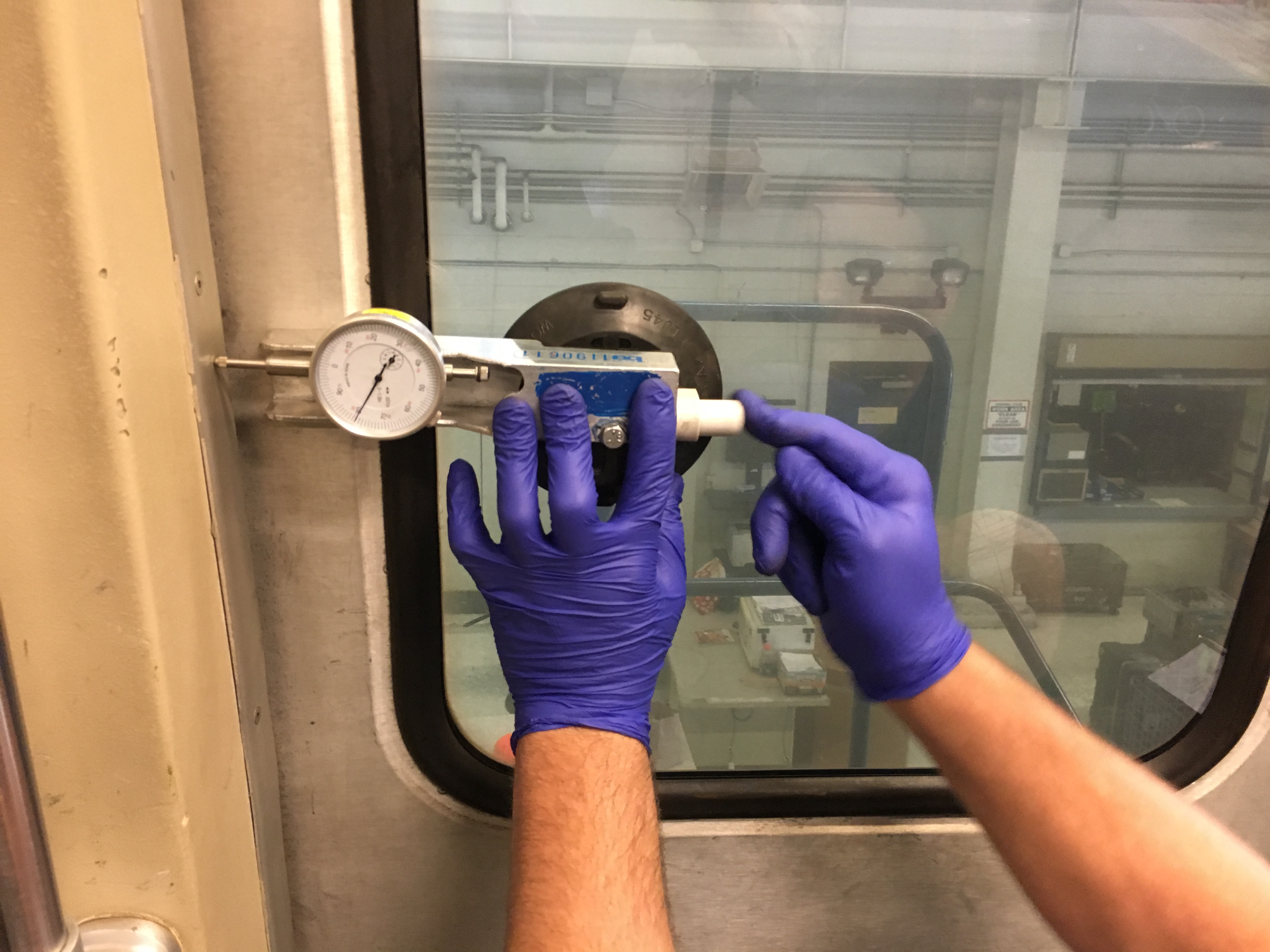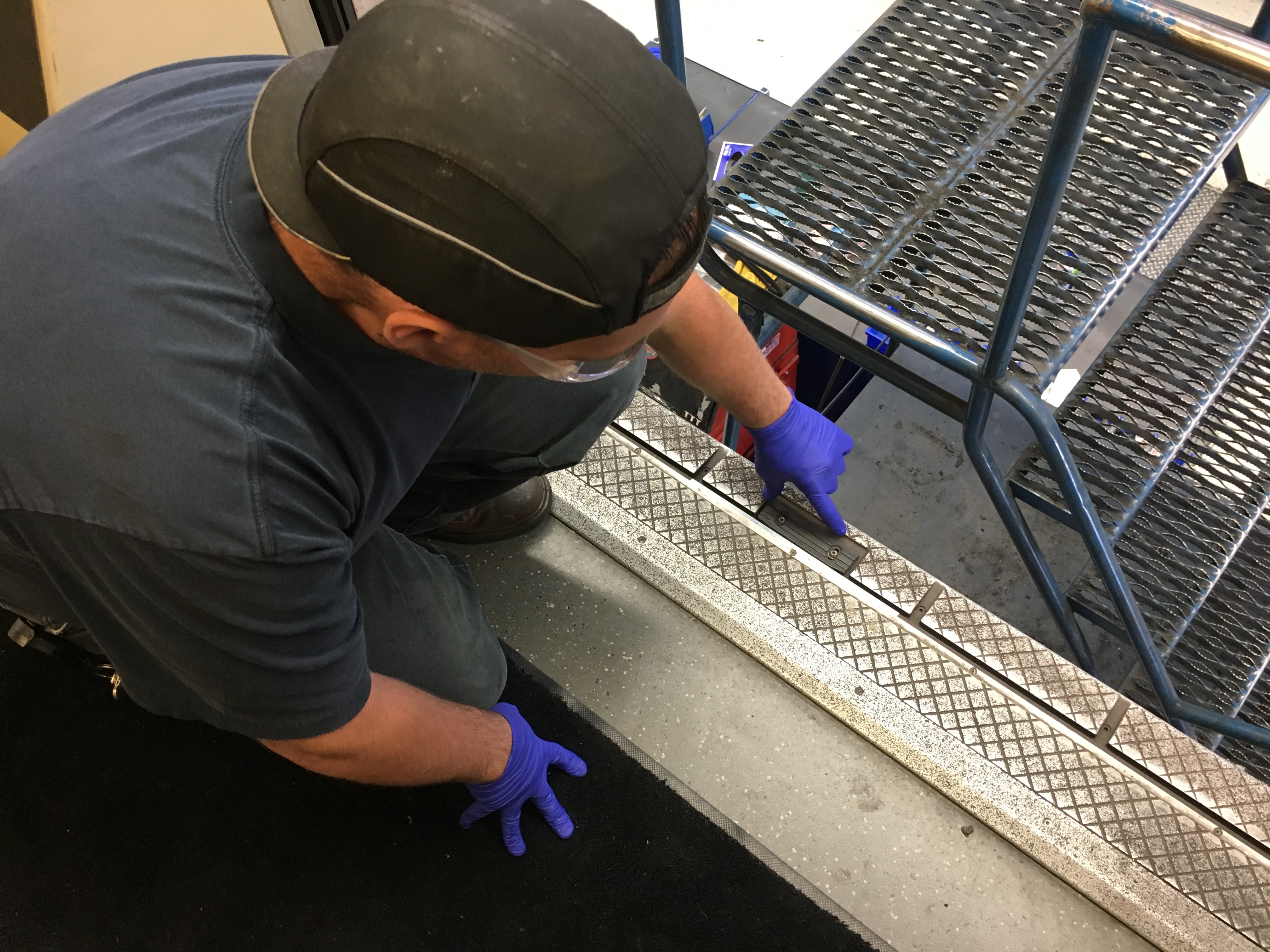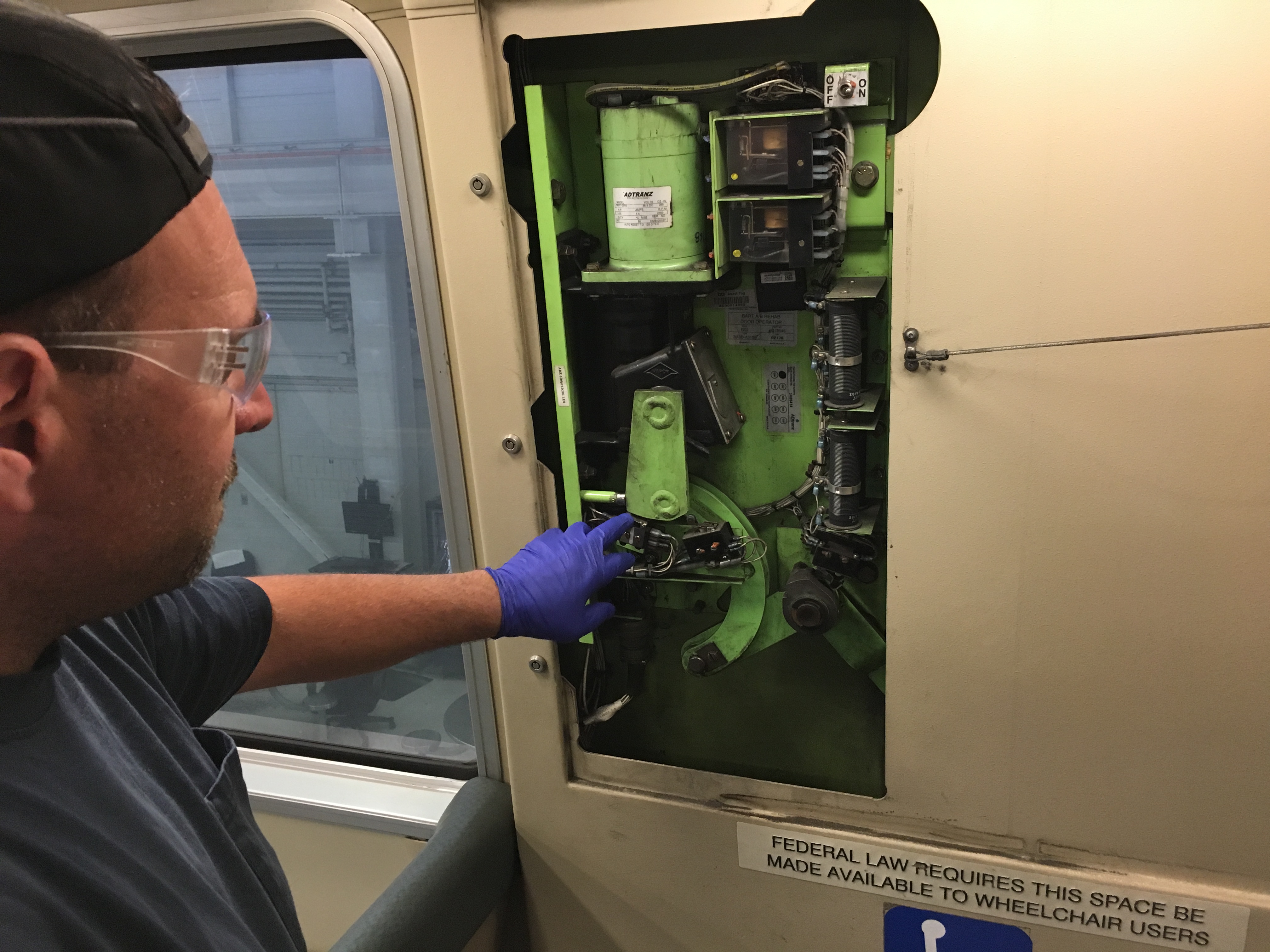The details on doors: How forcing your way into a BART car can harm service for thousands
BART maintenance workers already are doing everything they can to keep as many cars as possible in service. But they’re facing a growing challenge because of an avoidable problem. BART’s service yards are spending precious workhours repairing train doors that were forced open by riders or otherwise damaged. The latest numbers show through August there were at least 200 cases where vandalized doors caused service delays. On top of those delays, critically-needed cars had to be taken out of service for repairs. In the latest episode of our podcast series “Hidden Tracks: Stories from BART” you can learn more about the problem, how BART is responding, and what riders can do to help.
Transcript below:
HOST: “BART maintenance crews work hard every day to get broken down cars that are part of BART’s aging fleet back into action. But there’s one problem those workers face on a regular basis that BART customers can play a big role in preventing. Welcome to “Hidden Tracks: Stories from BART.”
Every week dozens of BART cars are taken out of service because of problems with their doors. All it can take to knock an entire train out of service is someone forcing a door open so they can get into a crowded car. On this episode of Hidden Tracks we’ll hear from Harold Engle, the superintendent of BART’s Concord Shop. Engle says when it comes to train car doors, a little more awareness from BART riders could have a major impact on the number of cars that are available for service.”
AMBIENT NOISE AT CONCORD SHOPS
HOST: “And I’m now speaking with Harold Engle, the superintendent here at the Concord Shop and this is a shop that’s always busy, you guys are working constantly to get these train cars back into action and that’s something that we’re always very interested in. But it seems like one of the real focal points for you guys is dealing with issues that come up with malfunctioning train car doors and for a typical rider, I think, it doesn’t really occur to them that this is a significant issue but for you guys it really is.”
ENGLE: “Yes and it’s not only failures that we find that are mechanical issues but are a big point of the effort that we put on patron-induced failures, that they’re not aware of the amount of impact that they’re actually causing. One of the biggest complaints that we have from our patrons is overcrowded cars and not realizing the impact of holding a door open to be able to get in actually affects that availability of cars. Anytime that we have a door failure it has to be treated very seriously since it’s a very safety sensitive aspect of the railcar. Regardless of what caused the failure there’s a whole maintenance process that we have to follow to insure the safety and reliability of those doors. Someone holding a door open, and it’s not malicious though some of the problems are obviously malicious, but a patron trying to get through, going to the airport and having his bag caught in the doors because the door was closing. So they pull it, that might misalign a seal, which all of a sudden then makes the “no doors closed” indication so the operator can’t move the train without having all the doors closed. If we can identify it to a specific door leaf it’s that much less of a maintenance burden because we can address a specific door. But oftentimes the failure repairs itself in a sense when the operator cycles the doors. They open them up, the patron removes whatever the obstruction was and the door gets all closed but yet it has already caused a delay or it has already caused a failure on the car, which then we have to address. If the door is not identified or the specific car is not identified then we have to check all the doors on every car within a consist. So if you’re talking about a 10 car consist that’s about eight door leaves per car, that’s 80 door leaves that we have to check. That takes a maintenance burden, that takes my resources away as manpower, which could be looking at fixing other cars, which causes this horrible cycle because now I have less cars available for service, which means more crowded cars, which means the chances of a door failure happening are more likely because I have more patrons trying to get in.”
HOST: “It is that vicious cycle and it doesn’t take a lot. It’s incredible, I think, for some people to realize that it could be something simple like trying to get onto a crowded train, your backpack gets caught in the middle of a door, that could be enough to knock the entire train out of service.”
ENGLE: “That’s correct because the train operator can’t move the train. The other aspect that comes in is realizing that train is not moving off the platform and going to the next station. There’s a domino effect, which causes a delay to the next track. That gets compounded because people keep coming into the platform so now you have an overcrowded platform so the crowd will fill that much quicker because the whole point is trying to move the cars at a certain rate to make sure that the platforms, because the platforms have a limit of the amount of people who can be there as well. So you have a fully crowded train and it is now delayed because I have to take the car out of service because there are times when I actually have to offload the car because we haven’t identified the specific failure so I might have to offload that car and take that car out of service. We have really good mainline technicians who try to mitigate those possibilities of an offload by going in and cutting out doors, trying to identify the problem so the train can remain in service with cutout doors. But there can be times when we’re not sure what exactly the failure is, we’re not exactly sure what the car is and we want to make sure of the safety of the patrons so many times it can lead to a delay on offload, which again that vicious cycle is now I have less cars, I have more people, and my resources are now being taken up by these cars that could be putting more cars into service.”
HOST: “And that cycle continues at our shops, especially here in the Concord Yard because once it comes in it takes time to repair. It takes time to diagnose the problem, to make that repair. Those are man hours or work hours that could be used responding to other issues with trains and it seems like it could really occupy resources.”
ENGLE: “Absolutely. Also, the thing that shows up is during our PM program we see obvious abuses to the doors that have to be addressed. We say a door guide, it’s a piece of equipment that basically guides the door within the pocket. A misalignment of that can manifest itself as a door not closing, it can be a jammed door, it could be off track. All sorts of different failures that can happen on a car that didn’t take the car out of service but in our maintenance program when it comes in through our PM cycle we’re looking for those things to make sure it will go through the next PM cycle so we can’t not address them, they have to be addressed. So again that takes resources. I was talking to my QTL, my quality team leader, and asked him about the time he spends on some of those doors and some of these doors on lets say an A-2, B-2 car can take up to four hours or up to a full shift depending on what they need to do. People have to realize it’s two pockets on a door, seals have to be aligned, the height of the door has to be correct so it moves up and down the track so there’s a lot of moving parts and a lot of things that have to mesh together correctly to run that. Kicking a door or getting a seal off of it seems like a small piece, oh you can just realign the seal and you’re good to go, but there’s a routine that we have to go through. We have a lot of specs that we have to make sure are into play to make sure there’s no added damage because we see the symptom we have to really go down to see if there’s any other thing that might compromise that door.”
HOST: “Because obviously this is a safety issue. You have to be really careful and make sure the door is fully functional.”
ENGLE: “Absolutely. Any door issue is addressed specifically for that. That’s an opening on the car, you want to make sure that it opens correctly, that it opens at the right place and that includes all the timing of the doors, all the indications. It is very time consuming but I think what I really wanted to get out was that the impact that our patrons have on this vicious cycle. If people were more educated as to what they can do and it can also be simple things, our patrons are very well trained as well. What I mean by that is if they see a door failure they understand that the train can’t move. A lot of times they put their own maintenance efforts.”
HOST: “Such as they are.”
ENGLE: “Such as they are and them not being versed on the things all they know is that if I get these doors slammed closed the train will move. I’ve seen very interesting maintenance interventions by our patrons. Again, that door had a failure, it has been logged as a failure, I’m going to have to address it, but our patron was kind enough to hide it from me because now I don’t know what actual pocket or what actual door leaf caused the failure because the train operator was able to get an all doors closed. So basically all I have is a report that there was a door failure on a 10-car consist, that’s 80 door leaves that I might have to check. The car might not be taken out of service but we’re saying we had this door failure, it was a while before it got moved, we couldn’t identify the door pockets so we’re out.”
HOST: “I’m speaking with Harold Engle who is the superintendent of the Concord Shops. I think it’s important to focus on these doors because a lot of the issues that you deal with here, your maintenance team deals with, are unavoidable and they really don’t involve anything that one of our patrons is doing. But with the doors there really is a role for BART riders to play to try to prevent these problems from happening in the first place.”
ENGLE: “What our patrons need to realize is their role in identifying a door for us. In other words, if I have a door failure and they can report the car number and the door leaf number, and they’re well numbered just for that, that helps us on the reporting side. The other item is the doors are closing, the operator has looked to see that people are clear and he’s hitting the button to close the doors. Trying to get that extra person in means that he’s going to have to cycle the doors again. As soon as the doors open more people try to get in and that kind of exacerbates the possibility of having more door failures. If you have a door failure that train isn’t going to go anywhere and you basically hurt yourself. The other part was people kicking the doors or trying to do their own maintenance. I think the best thing is to notify the train operator you have a door that’s stuck, what the car number is and hopefully the train operator or a mainline tech can be dispatched to address that specific door. Otherwise you’re hiding the door failure form us, we still have to address it because it was an issue but then that’s more cars that won’t be available, which ends up manifesting itself as an overcrowded train, which again increases the possibility of getting more door failures.”
HOST: “Right back to that vicious cycle and this is not an uncommon thing. We were just looking at the maintenance report for the last week and I believe the number was 39 cars had door issues all throughout the BART system. That’s not an insignificant number we’re talking about dozens of cars that are being taken out of service for door problems.”
ENGLE: “That is correct and all you saw was basically the mainline incidents that happened, those are the problems that happened on mainline. That doesn’t’ really count the ones that are found during our preventative maintenance aspect, which were in a sense patron induced where we see signs of the door being kicked off track or seals that are compromised because of the amount of abuse that they’ve been getting.”
HOST: “We envision folks trying to get onto the crowded car in the last minute, trying to force their way in and pushing themselves through the door as being the culprit and certainly that happens a lot. But there are other circumstances, I mean there are all sorts of ways people can cause problems for the doors.”
ENGLE: “Yes. By looking a lot at the videos we have, the passenger videos to identify because we’re working really hard to classify delays. I think the numbers about 30 to 40 percent of incidents in a sense don’t get classified. What I mean by that is I can’t get a root cause saying this is what it is and this is what we’re doing to repair this. If it’s an unknown how can you make it better? When we’re looking at the videos we’ve noted there’s some I would say malicious some I would say unintentional. It’s a matter of educating the public. There’s one incident that caused a delay, there’s an emergency door handle and I think most people that have ridden BART have seen the little cover that says ‘for evacuating the train.’ I saw a video of a person that put his bike on the track but he found that little spot was a perfect place for his handlebars so he wouldn’t have to strap or hold onto the bike. What he didn’t realize is that actually activates the emergency release of the car enough to set off a fault indication but not enough to open the door. Just enough to manifest as a door failure. Again, that was a hidden one so that’s an indication that something went wrong. It wasn’t identified as a specific door. We were able to troubleshoot it, found it, and then when we reviewed the tape we were able to see it. But that’s not at a cost either. The amount of time that it takes to review these tapes, to view it to try to identify this is also resources that I lose that could otherwise be used for repairing other known issues on cars.”
HOST: “I think that’s interesting for our riders too because as everybody knows we now have working security cameras on all of our train cars. It’s primarily a public safety tool, it’s utilized by the police department for their investigations but it also serves another purpose. In this case you can actually go to that same surveillance system and get video that shows you how someone may have propped a door open.”
ENGLE: “True but not without a cost. It takes me to send out a technician to download the video and then it takes someone to actually review the video. If I have a specific time stamp of when it happened but again that goes back to what I said before that we have very well-trained patrons that a lot of times will do their own maintenance on the doors just to get the train moving. So when I get the actual report I don’t necessarily have an accurate time stamp for when the failure happened or even the correct station of where it happened. A lot of times what we see is obvious, patron induced but we’ve been looking at it further just to get it classified. For me the effort that is involved in this video, though it’s an important tool, it’s something we’ve been using to classify these but it doesn’t go without a cost. A lot of times that technician that’s retrieving that video I could be using him to fix another car. The police department downloads the videos for the surveillance and that type of thing but having to download all of these videos just to see a dance crew that’s playing on our stanchions and banging up onto the doors just to say that it was patron-induced failure so I can classify it, it’s not without a cost.”
HOST: “I’m speaking with Harold Engle who is the superintendent of the Concord Yard. BART has the oldest fleet in the country. Everybody knows this, that’s why we’re so anxious for the Fleet of the Future but does that age make the doors even more vulnerable. In other words, I’m imagining a lot of times it doesn’t take a lot to create a problem.”
ENGLE: “I think that’s not necessarily in relation to the age of the car. Any transit organization in the country deals with door issues. It’s usually doors, brakes, and propulsion that are our biggest hits and that’s the nature of the transit organization. Even though we have an aging fleet we’ve actually surpassed our reliability numbers so that says a lot for our maintenance efforts that we have an aging fleet yet the trends have been going up as far as our mean hours between delays and mean hours between actual mainline failures. But we could be looking at the Fleet of the Future, we’re always looking at continuous improvement and we’re always battling for resources. I don’t think it’s necessarily a function of the aging fleet. The item is that because it’s an aging fleet there’s sometimes a materials burden aspect of it. Some of the parts, there’s newer doors, newer parts so a lot of times it’s trying to get parts for a system that is pretty old. It’s not an easy off-the-shelf thing you can grab so I would say that’s where some of the age might affect the cars. But it’s doors moving on a track that are very vulnerable to blunt force, blunt-force trauma and from what we see it’s a lot of times the doors as far as getting knocked off track it doesn’t happen from a door sliding in one plane. It means it’s been kicked out and a lot of times that’s what we have to deal with and the amount of maintenance it takes to put those back to right and then also making sure that everything is up to specs is a considerable resource.”
HOST: “We can close on this, if someone is listening to this conversation a BART passenger is wondering how can I be helpful? A lot of it is of course common sense: don’t bang on the doors, don’t shove them open in a crowded train scenario. But what else can a rider be aware of, how can they make it easier for us to avoid more problems with our doors.”
ENGLE: “It seems like you said common sense but there’s a door announcement, ‘the doors are closing please stay clear of the doors,’ that’s exactly what needs to happen. I know the human nature is the light turns yellow I’m going to hit the accelerator to try to get through that intersection but we all know that yellow is to clear that intersection. Obviously it’s to give a warning for the person that’s going through that threshold to make it in not for everybody on the platform to try to rush in. So listen for those door announcements. The other thing is if you do see a door failure I would try to ask not to do your own maintenance intervention but if you do please notify the train operator which door was affected and the car number so it’s identified to a specific door pocket so I don’t have to look at 10 cars, 80 doors, I’m looking at one car and possibly two door leaves.”
HOST: “Sure because timing matters and resources are scarce especially in a shop like this. Every time I’ve been here you guys are fully loaded, it’s not like you get a break from these things. Every minute, every hour counts.”
ENGLE: “Yes and the impact is people saying I have a crowded train and the availability is, you can have a constructive role within that availability which is if you make it easier for our maintenance program by adhering to the door announcements by not kicking a door, by not trying to jam a door, by reporting what you have. That makes my life easier as far as being able to give as many cars as I can to the public. We want them safe, we want them reliable, we want them clean. Like I said that doesn’t come without a cost and that’s our base. So when you add more of these patron-induced failures it just takes away from our base. We’re 365/7 days a week operation and we’re always busy. Be it a hot car, be it a door failure, be it a propulsion failure we address them but a lot of times when we have to address it some are obvious patron induced, which then gives it another new meaning but it’s nothing I can ignore. It still comes with a maintenance burden, it’s not a mechanical failure it was something that was induced. If we can minimize the amount of failures that are induced that means I have more resources to put more cars out for the public.”
HOST: “Harold Engle, superintendent of Concord Yard thank you so much for your time with this.”
ENGLE: “Thank you for this opportunity to try to help me to help you.”
HOST: “If the patrons can help you, you can help them with more cars and it’s a good deal for everybody.”
ENGLE: “Absolutely, thank you.”
HOST: “And thank you for listening to Hidden Tracks: Stories from BART. You can listen to our podcasts on SoundCloud, iTunes, Google Play, Stitcher and of course at our website BART.gov/podcasts.”
